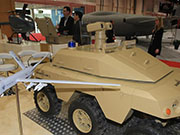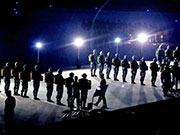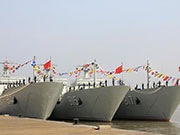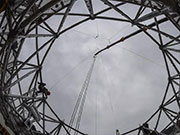

Thanks to its blended wing design the plane's fuselage would be wider and shorter, and it would be propelled by six biofuel engines
With a complete rethink, the team, including aircraft design PhD student Adam Omar, designed an advanced plane that bears some of the hallmarks of today’s jets and next-generation technology.
Thanks to its blended wing design its fuselage would be wider and shorter and it wouldn’t have a tail wing, and it would be propelled by six biofuel engines at the back of the body.
The widened body, with larger wings, would provide cabin space for up to 1,000 passengers, but the designers say the aircraft would have more legroom than today’s planes despite having so many people on board.
Of the notable changes, the concept plane has very few windows, which could make air travel uneasy for some.
Backseat monitors would be a thing of the past, replaced with wraparound virtual reality headsets that display 3D films and programmes
 |  |
Day|Week

 Beijing steps up security for 'two sessions'
Beijing steps up security for 'two sessions' Chongqing sniper’s new record: 13 holes on a rice grain
Chongqing sniper’s new record: 13 holes on a rice grain Women put on spring dresses in Hangzhou
Women put on spring dresses in Hangzhou UAVs at Unmanned Systems Exhibition & Conference in UAE
UAVs at Unmanned Systems Exhibition & Conference in UAE PLA's paratroopers conduct night training
PLA's paratroopers conduct night training Three new-type tank landing ships join the East China Sea Fleet
Three new-type tank landing ships join the East China Sea Fleet 3,492 reflector panels of China's mega telescope installed
3,492 reflector panels of China's mega telescope installed Stunning Kuche on the Silk Road
Stunning Kuche on the Silk Road Tunisian man creates art of sand in Hangzhou
Tunisian man creates art of sand in Hangzhou Goddess teacher shares fitness program online
Goddess teacher shares fitness program online